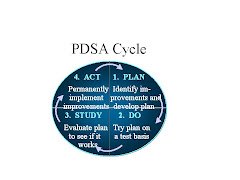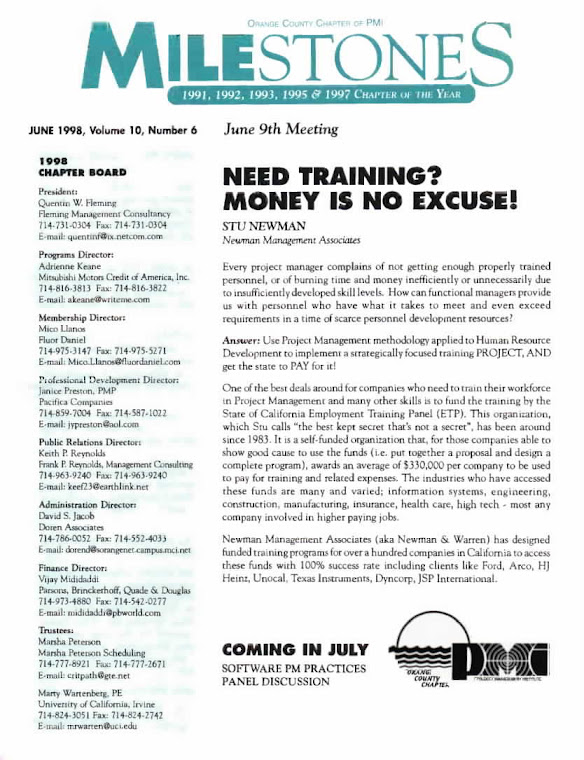To maintain your PMP, completing and documenting a minimum of 60 PDUs per cycle (three years from date of certificiation) are required by PMI. There are several ways and methods for earning PDUs, some of which cost money, and many that cost nothing. The summary below appeared in PMPhub.net; click for complete link.http://www.pmhub.net/wp/2011/06/david-j-lanners-how-pmps-can-earn-pdu-for-free/
David J. Lanners PMP: How PMPs can earn PDU for FREE

Dear Friends,
The enclosed summary and attached one-page “printer-friendly” guide reflect the changes to the recertification program(s) implemented by PMI on March 1, 2011.
The guide was developed in response to the following question posed by a very successful executive: “If a PMP or PMP candidate will waste his/her own money on pedestrian education and/or training, how careful are they likely to be with somebody else’s money?”
——————————————–
Project Management Professionals earn PDUs without spending money…
.
To earn PDUs without spending money, we suggest you consider Category C, D, and E.
Category C Activities that we recommend are:
Self-Directed Learning. You may earn 1 PDU for every hour spent in self-directed learning such as reading articles, books, or instructional manuals, watching videos, using interactive CD-ROMs, podcasts, or other source material, having formal discussions with colleagues, co-workers, clients, or consultants, being coached.
Documentation required upon PMI audit/request: Evidence supporting reported learning such as dated notes.
Category D Activities that we recommend are:
Presenting in a webinar, developing course content for project management related courses, serving as a speaker or instructor for project management related courses and presentations.
You may have a series of “formal” presentations over lunch in your employee cafeteria scheduled by your training department. Keep a copy of the formal announcement, a copy of the AGENDA, and a list of the attendees. Both the time required to prepare or create this knowledge and the time to present it can be claimed for PDUs. If you spent 7.5 hours to create your presentation and 1 hour to deliver it, this would count for 8.5 PDUs.
Member or moderator of a panel discussion at a conference, symposium workshop or formal event at which you are serving as a subject matter expert in project management. 1 PDU earned per hour of prep and delivery.
Note: PDUs claimed in this category count against the maximum of 45 PDUs allowed for PMP credential holders in the “Giving Back to the Profession” categories (Categories D, E, and F).
Documentation required upon PMI audit/request: Copies of educational materials OR course agendas.
Category E Activities that we recommend are:
Volunteer (non-compensated) service to a non-profit organization (PMI or non-PMI). To claim PDUs for service as an elected or appointed PMI committee member, you must serve in that role for a minimum of three months. However, providing pro-bono (free) project management services to any non-profit community group earns 1.0 PDU for each full hour of volunteer (non-compensated) service regardless of elapsed months.
Delivering free PM-related services to a non-profit community group enables you to earn PDUs much faster than serving on a PMI Chapter committee which requires a minimum of three (3) months service to qualify.
Note: PDUs claimed in this category count against the maximum of 45 PDUs allowed for PMP credential holders in the “Giving Back to the Profession” categories (Categories D, E, and F).
Documentation required upon PMI audit/request: Letter or certificate from the organization served acknowledging you for your project management related service or role in coaching mentoring others.
Category F (Working as a Project Manager)
Working as a Professional in Project Management. You can earn a total of 5 PDUs per 12 month period or 15 total PDUs per cycle for credential holders.
Documentation required upon PMI audit/request: Proof of employment (Job description).
* Certification programs sponsored by non-profit organizations cannot require that only commercially sold (fee paid) courses qualify for certification or recertification. If you are a PMP, you have the designation that PMI promotes as being associated with professionalism in project management. That designation (or other similar certifications) likely qualify you to present material that is consistent with the PMBOK Guide in order to earn PDUs for helping educate others in the profession. Since the PMP designation is intended to promote professionalism in project management, you are doing so in an honorable way when you teach others in a manner consistent with the PMBOK Guide.
This summary reflects program changes implemented by PMI on March 1, 2011.



